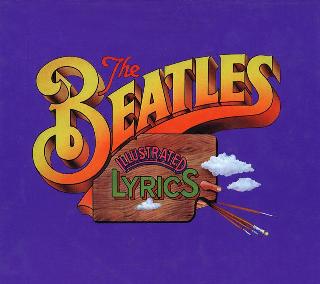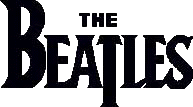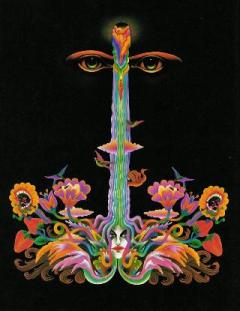Index
Home
Vorige
Mother Nature's Son
Composer(s) : Lennon and McCartney
Year :
Chords/Tabs: Mother Nature's Son
Notes on "Mother Nature's Son" (MNS)
KEY D Major
METER 4/4
FORM Intro -> Verse -> (spacer) -> Verse -> Bridge ->
Verse -> Bridge -> Verse -> Outro (w/complete ending)
GENERAL POINTS OF INTEREST
Style and Form
- This is another one of those hymn-like folksongs, cast by Paul in a
decidedly pop music formal scheme. It's a close relative of
"Blackbird;"
lyrically, perhaps the bit less profound but more elaborately produced
of the two songs.
- The form of the official recording is the small two-bridge model (i.e.
only one verse between the buttons), with one ingenious variation: to
separate the unique pair of verses that opens the song, the final phrase
of the verse is repeated as a "spacer" in between them. Then, the same
gesture is repeated at the very end of the song, this time, in order
to provide the outro. Compare this with the Esher demo and A3 studio
outtake of the song, both of which contain a more folk-like final repeat
of the refrain-like bridge at the end.
Melody and Harmony
- Textbook melodic values abound here; e.g. rakish-not-slavish balance
between up & down motion; motion via steps & leaps; the range is
extended upward for the bridge. I dare say the upward phrase sung
at the end of the verse is one beautiful pentatonic lick.
- The harmonic rhythm is unusually slow, relying on pedal points in both
verse and bridge sections.
- The key of the song is definitely Major, though the harmonic vocabulary
includes the inflections of both the V-of-V chord and some chromatic scalar
motion in the so-called inner voices.
Arrangement
- The acoustic guitar is a constant factor on the backing track, with
a brass choir added in for much of the songs mid-section, plus an
unusually small amount of percussion effects.
- Even with such a spare number of disparate resources at play, the
layering of the arrangement is subtly choreographed, with a couple
of unique touches deftly "planted" in the cinematic sense of the term.
- The schematic trace:
Intro: Guitar only, but notice the couple of drumbeats, which at
this point of the track would seem to be random, out of nowhere;
an example of "planting."
Verse 1: Still guitar only
Verse 2: Add brass. Note the "bricks laid on the overlap" manner
in which the trumpet enters during the spacer that precedes this
verse. Reinforce the E Major chord with a rising arpeggio in the
bassline, starting here and continuing for the rest of the song.
In the second half, add percussive tapping.
Bridge 1: Add what sounds like a bass drum on the downbeats. Try
to shift the tapping to just offbeats, but note how the pattern is
NOT carefully maintained. The vocal part has no words.
Verse 3: Drop the tapping altogether; though I fear some of it
appears out of nowhere in the second half.
Bridge 2: Drums again; this time, they even get to show off a small
fill at the very end of the section. The tapping is back.
Verse 4: Drop the brass, but add a second track for acoustic guitar.
In sympathy with the bridges, the vocal part here also has no words!
Outro: Brass returns for the curtain call, and the final title
line of singing is double tracked.
SECTION-BY-SECTION WALKTHROUGH
Intro
- The intro is in two parts: the opening, played ad-lib, anticipates
the what turns out to be the verse's propensity for the V-of-V chord,
though this early in the procedings, you're not yet sure just what
it means. We then get 8 measures of folksy vamping on the I chord
including plenty of oscillation to neighboring tones on both sides;
but in terms of harmonic bone structure, it's all a D Major chord.
Verse
- The verse is a four-square 16 measures long in an AB + C pattern
of 4 + 4 + 8:
inner voice: |A |B |- |A |
inner voice: |F# |G |- |F# |
chords: |D |- |- |- |
D: I
|D |C# |B |- |
|B |A |G# |- |
|D |- |E |- |
(vi6/4) V-of-V
|C# D |C# D |C# D |C# |
|E F# |E F# |E F# |E |
|A |- |- |- |
V (I6/4)
|A |- |- |- |
|F# |F-nat. |G-nat. |F# |
|D |- |- |- |
I
- I've notated the two inner voices that account for most of the
"harmony;" direct your attention to the brass overdubs to latch
onto this. I've pencilled in (in parentheses) the places in which
a Roman numeral-obsessed analyst might be tempted to put labels on
6/4 chords, though I emphasize my preference for leaving these alone
in this context as the by-products of neighboring tones, not root
movement.
- The neighboring motion doubles in speed for the third phrase, creating
an illusion of increase in the harmonic rhythm; rather a paradoxical
effect, considering the pedal point.
- That chromatic line in the final four measures is quite twisty; I
dare you to sing it! It places an enigmatically overcast shadow
on the otherwise "pretty sound of music;" a much needed hint of
sadness behind the smile.
Bridge
- The bridge is an unusual 15 measures long, parsing out as an AAB
form of 4 + 4 + 7. You might say that seven-measure phrase is really
eight measures long, overlapping with the final measure of the second
four-measure phrase; an "elision" effect we've seen many times in
Beatles songs.
---------------- 2X -------------
|A |- |B |A |
|F# |- |G |F# |
|D |- |- |- |
I (IV64) I
|C# |C-nat. |- |
|F# |- |- |
|D |- |- |
(V-of-IV)
|B |Bb |A |- |
|G |- |F# |- |
|D |- |- |- |
(IV6/4) (iv64) I
- The descending chromatic line is another bittersweet touch whose
deployment enhances the off-center phrasing by lingering aysmmetrically
over the C natural for a second measure.
Outro
- As mentioned earlier, we finish off with a repeat of the "spacer"
phrase.
- The song ends off on a D dominant 7th chord rather than a plain triad,
the effect of which is somehow ambiguous and sad; a subtle allusion
back to the same chord that was lingered over in the bridge.
SOME FINAL THOUGHTS
- As a foible of human nature we each tend to hold on to multiple self
images, some sincere and realistic, some completely fantastic. And then
there are some that may appear to originate from the fantasy side of the
house, but which are capable of being fully actualized through the ineffible
union with a true mate.
- No matter how much Paul might have wished to see himself as a child of
nature (yes, I am aware of the allusion to John's original lyric for
"Jealous Guy"), I take a leap of faith here to suggest that he needed
the participation of his Linda in order to let it be.
Regards,
Alan (awp@world.std.com)
---
"These days such a kind girl seems so hard to find." 050398#147
Copyright (c) 1995 by Alan W. Pollack
All Rights Reserved
This article may be reproduced, retransmitted, redistributed and
otherwise propagated at will, provided that this notice remains
intact and in place.
Ook op The Beatles [White Album]:
(c) 2024 Serge Girard


 (c) Alan Aldrigde, The Beatles Illustrated Lyrics
(c) Alan Aldrigde, The Beatles Illustrated Lyrics